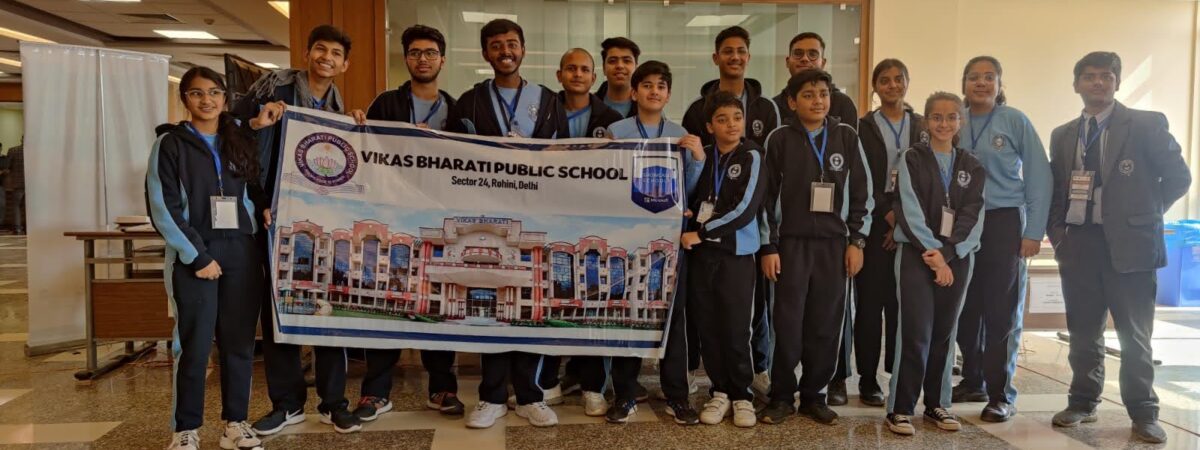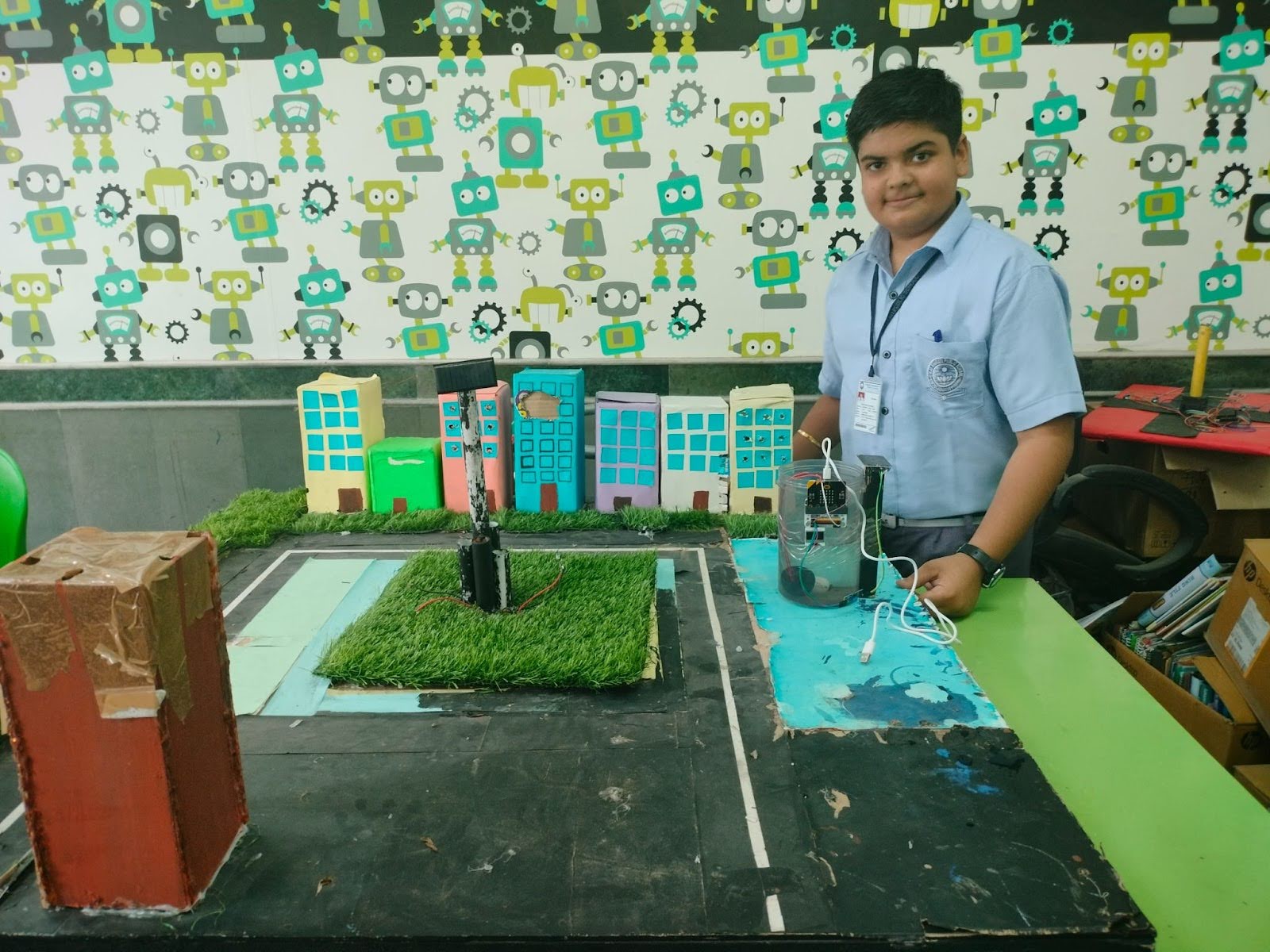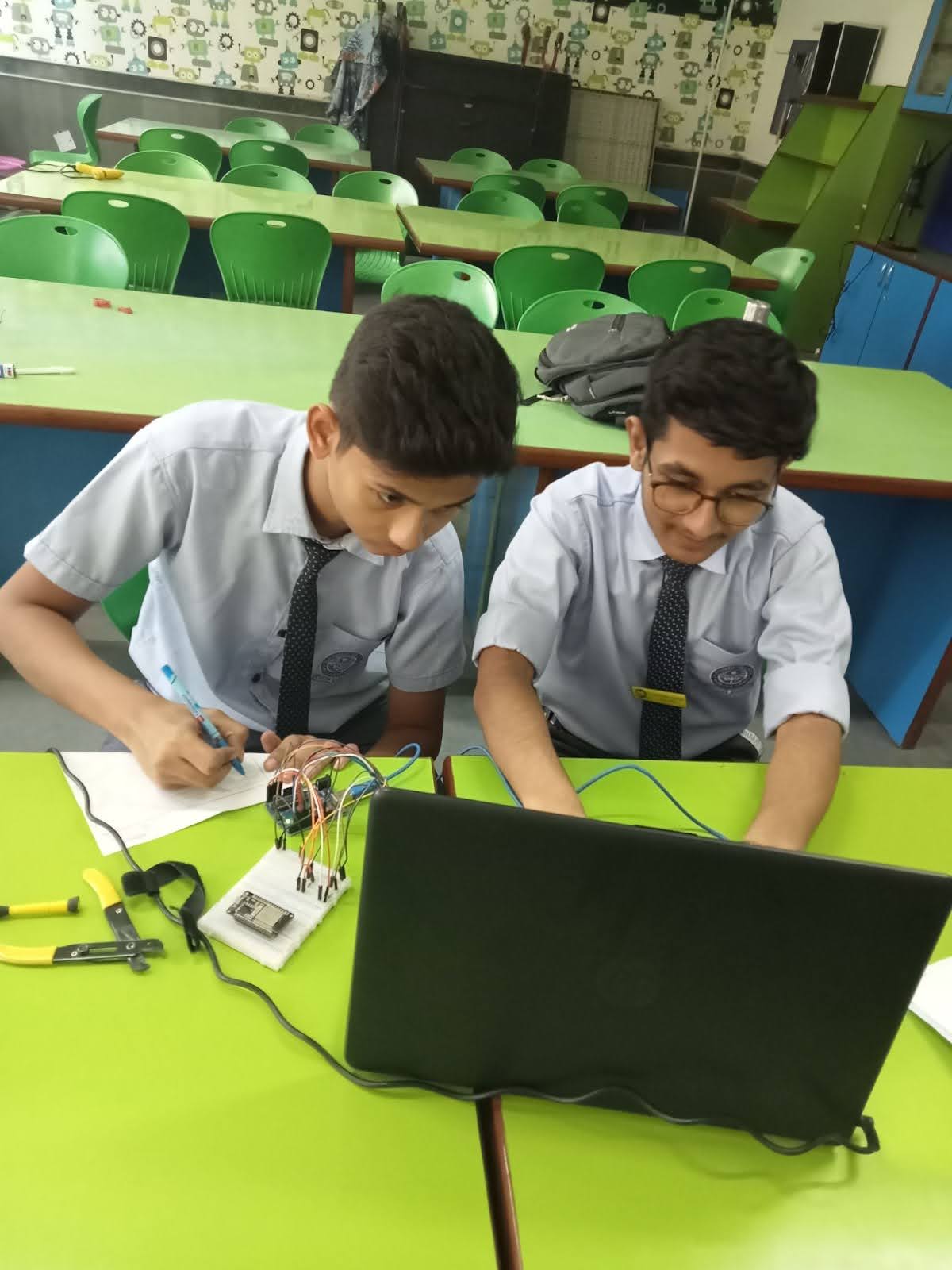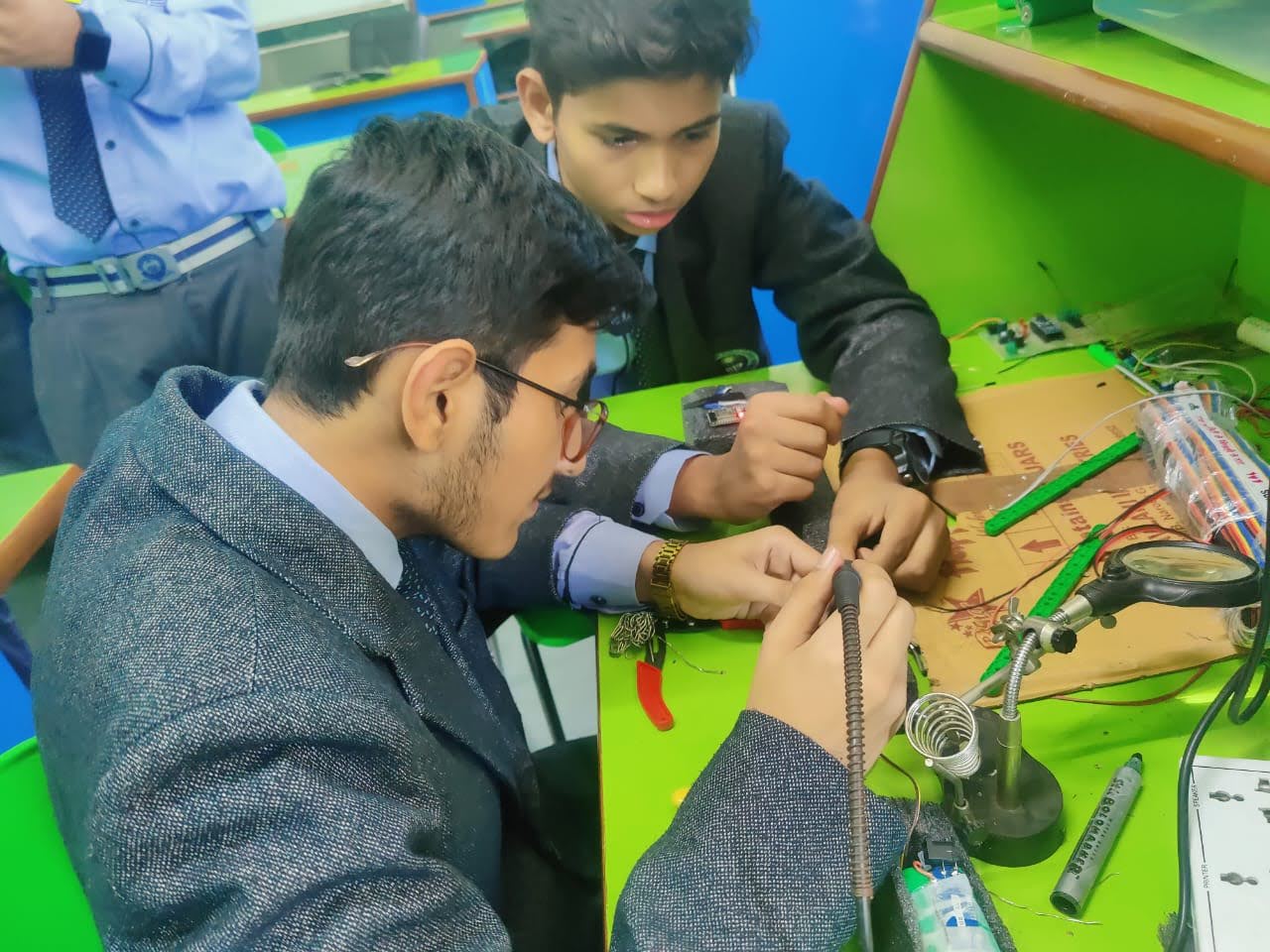
Recognizing the importance of hands-on, inquiry-based learning, I regularly mentor students on STEM projects that encourage students to think critically, collaborate, and solve real-world problems. Many of these projects also address the Sustainable Development Goals, including those featured in the Ciena Solutions Challenge project gallery such as AC Power Optimiser, Agro Tech, AI Sensor Boat for Protecting Aquatic Animal and Water Quality, IOT-WSN Connected Bins, and Anna Rakshak.

Student prototype on display.
The team initially aligned their work with Sustainable Development Goal 2: Zero Hunger. By working on food waste reduction initiatives, raising awareness, and supporting small-scale farmers and community organizations, students aimed to contribute to a community where everyone has access to adequate and nutritious food, reducing hunger and fostering a more resilient and inclusive society. As students discussed and identified the key issues they wanted to address, they soon realized that their topic related to multiple Sustainable Development Goals beyond Goal 2, including Goal 3: Good Health and Well-being, Goal 12: Responsible Consumption and Production, Goal 11: Sustainable Cities and Communities, Goal 14:Life Below Water, and Goal 15: Life on Land.
Students studied data, reviewed case studies, and explored successful initiatives from other communities to understand the multiple factors contributing to related issues like food waste, food insecurity, environmental degradation, and limited access to electricity. To ensure their project was community-oriented, students involved local community members and organizations, and sought guidance from individuals and institutions affected by food waste, lack of electricity, and climate change.
With a solid plan in place, the students began implementing their project by raising awareness about food waste reduction, food security, and sustainable farming practices through campaigns, workshops, and seminars. They also collaborated with small-scale farmers to develop innovative farming techniques that reduce spoilage of food grains. Recognizing the power of collective action, students collaborated with schools, community organizations, and local government agencies to expand the reach and impact of their project. They presented their prototype to like-minded individuals, sought funding opportunities, and aimed to scale their initiatives, regularly evaluating their progress and adjusting their strategies along the way based on feedback from the community.
Their continued efforts have sparked conversations, inspired others to take action, and gained support from various stakeholders. Currently, the team is working to convert their prototype into a product so that they can take it to farmers who have to sell grains at lower prices due to current inefficiencies with grain storage.
“Through our project on food grain waste reduction, we realized the power of technology in creating change. Our prototype is a great help for small-scale farmers who were not able to store their grains for longer duration.” – Anna Rakshak Student Project Team
In the future, the Anna Rakshak team hopes to collaborate with the Food Corporation of India to further modify the project so that it can be used in large granaries and further minimize the spoilage of food grains.

Students collaborate to test their device.
Our senior students also play a key role in assisting younger students through peer-to-peer learning. They generously shared their knowledge and expertise, helping each other overcome challenges and master the required skills. This collaborative approach fostered continuous learning and skill-building among all the students. Together, students researched various tools and technologies using free online tutorials and courses through platforms like learn.microsoft.com, Framersspace.com, and edx.com.
“By leveraging free online learning platforms and collaborating with classmates, we taught ourselves coding and developed a STEM project using Arduino to prevent the wastage of electricity. It was empowering to realize that technology is a tool we can wield to shape a sustainable future.” AC Optimizer Student Project Team.
Recognizing the students’ passion and hard work in their projects, the principal arranged online and in-person sessions with mentors and experts who had prior experience with the tools and technologies relevant to the students’ projects. Mentors offered guidance, and shared best practices and insights that helped the students effectively develop their skills. These interactions provided students with guidance on specific tools and technologies, and a deeper understanding of their functions and potential applications for the problems they seek to address.

Students develop their project in the school tinkering lab.
“As educators, our role is to embrace students’ individuality, nurture their strengths, and provide them with the tools to paint their own masterpiece in the world.”
A number of our student teams continue to work towards enhancing their projects and converting their prototypes into products that can benefit others. In addition to the example of the Anna Rakshak grain storage solution, the student team working on the AC Optimizer project are also working to collaborate with different offices and educational institutions, including one that has already agreed to install the AC Optimizer in their classroom so students can receive additional feedback to enhance their product.
Below are just a few suggestions for other educators who want to encourage students’ creative use of technology in tackling real-world challenges.